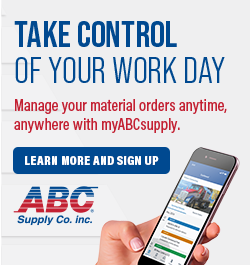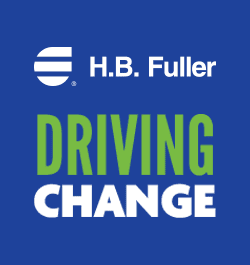7 Consumer Trends to Watch

By Ingage.
In order to stay relevant in this new digital landscape, your business needs to have its finger on the pulse of new trends. Learn what consumers want more of in 2022.
The market for roofing is constantly changing, and smart contractors know that the key to success is staying alert to new customer trends. With so many buyers and businesses shifting into the digital space, traditional marketing strategies are no longer enough to meet potential customers’ expectations.
The shift towards the digital space was without a doubt accelerated by the coronavirus pandemic. During the earlier stage of the pandemic, businesses were forced to pivot and migrate to the digital realm. This has played a key role in shaping today’s consumer and business trends. It has also altered the way that certain industries communicate forever.
To reiterate, business owners and marketing teams both need to stay on top of their corresponding market trends. This will help them develop content that best resonates with their target audiences. That being said, here are the seven buyer trends that you should keep an eye on in 2022.
1 – A push for more sustainable products
In the past few years, sustainability has become one of the biggest factors in consumer decision-making. Furthermore, it’s a trend that is highly likely to continue, considering that more and more people are understanding their role in conservation. Many consumers believe that major brands have almost as much responsibility as governments in protecting and preserving the earth. Over the last decade, more organizations and entities have been speaking up about the negative effects certain human activities have on the earth. Sustainable and eco-friendly products are now gaining traction — and are also often able to be sold at higher price points — as they reduce our footprint.
An IBM study on buyer trends shows that 77% of consumers consider sustainability and environmental responsibility to be important brand values. Consumers are more likely to purchase from brands that champion these values in their marketing strategies and/or offer eco-friendly products. Data from 2019 shows how sustainable products have experienced 5.6x higher average sales growth, compared to items that are not advertised as sustainable.
Additionally, it is not only sustainable products that people show increased interest in purchasing. Now, more than ever, people are more inclined to spend on brands that value ethics in their production. 32% of consumers in the United States and the United Kingdom are willing to pay more if they know that the brand promotes ethical manufacturing. Knowledge of this rising trend benefits businesses because they could implement this great practice in their production — and profit from it!
2 - The rise of “digital seniors”
Contrary to popular belief, a decent percentage of our elderly communities have kept up with technology. They are more than willing to embrace new devices released by user-friendly brands. Euromonitor has recently backed this claim, saying that consumers across all generations have been adjusting to the online space, especially after the pandemic hit.
Many businesses were initially hesitant to shift to the digital space because they thought that the learning curve for their customers would be too steep. However, many consumers prefer digital experiences because of the convenience they offer. It goes without saying that buyer trends now favor the digital space, so businesses need to maximize their digital strategies to best resonate with customers. For example, brands can present their customers with a website where they can learn more about the brand (i.e., core beliefs, values and the brand’s origin/story). They can also utilize social media platforms to expand this reach.
With this knowledge, brands can now optimize how they present themselves in the digital space. For example, you can create an interactive, digital customer experience that assists your customer throughout all stages of the buyer journey. This will make the learning process much more seamless, especially for seniors trying their hand at the World Wide Web.
Presenting your brand can be made even easier for customers of all ages. With an interactive presentation tool like Ingage, you can create engaging presentations to help you effectively communicate with your customers.
3 - Customers crave experiences, not just satisfaction
A customer’s experience with a brand begins the moment they come across the brand. Shopping is not just limited to the purchase of the product — far from it! There are several factors that make a consumer’s entire shopping experience enjoyable. Customers are looking for a brand experience that provides them with value while showcasing the brand’s values. Aside from bringing home products, customers also want to bring home memories and experiences they can talk about.
Businesses need to leave a meaningful impact on their patrons. A Forbes article recognized how a brand or business’s voice is crucial in creating experiences for customers. This also includes having an excellent omnichannel customer support system. Offering multiple points of contact allows your brand to communicate directly with your customers on their terms while personalizing your customers’ experiences.
A personalized shopping experience helps customers feel like they are valued and supported by the brand they patronize. This can be achieved by having consistent service online and in-store, providing smart shopping suggestions, leveraging chatbots for your website and conducting deep research on your target audience’s wants and needs.
Customers would also benefit from an in-depth presentation explaining what your brand can offer. Ingage’s easy-to-use presentation tools can help you create catalogs and samples to showcase your products and services to your customers.
4 - Social shopping
Online shopping boomed in 2021, which significantly impacted buyer trends. E-commerce revenue rose by roughly 20%, and with the rapid growth of online shopping, it is expected that this will double by 2025. 62% of online shoppers purchase from online shops around four times a month, making online shopping a dominant form of shopping. Of all kinds of e-commerce, social shopping is growing the fastest.
Because of its dominance in the digital space, social shopping is shaping buyer trends this year. It influences what, where and how consumers purchase. Major social media platforms, in particular, play a massive role in shaping consumer tastes. This comes as no surprise, considering how nearly 60% of the global population uses at least one social media platform. Brands can make use of shopping features and monetize in-app functions to grow their followings and boost revenue. Consumers can also browse through social media platforms to shop brand catalogs.
Though this type of shopping is popular in the fashion industry, its’ reach goes far, far beyond. The home improvement industry can also leverage social shopping. Homeowners can draw inspiration from content they see on social media to pick out the type of kitchen cabinets or wallpaper for their homes.
5 - Immersive buying experiences
The digital space has become a big part of many consumers’ everyday lives. Technology, particularly mobile devices, is used to communicate, navigate and shop. Many brand interactions happen online, and brands across all industries are creating digital experiences for their customers. As such, bland, singular digital channels of the past are no longer enough for brands to stand out.
Brands need to develop real-time, multimedia and omnichannel experiences that are uniquely tailored to their target audiences. Doing so can help foster a deeper relationship with their customers and connect with them on an emotional level. This also goes hand in hand with developing a personalized experience for your customers. Both show them that you value them over making a sale; they are more than just a number to you!
2022 buyer trends suggest that providing immersive experiences will help a brand rise above its competitors. Leveraging artificial intelligence and augmented reality technologies will help brands provide their customers with new, interactive shopping experiences that make the overall brand experience more engaging.
For example, makeup brand Sephora allows its customers to try on different makeup looks using augmented reality. Customers no longer need to put actual makeup on, which reduces the time of applying and the trouble of cleaning up. It also helps them mix and match different products, which would be difficult to do in-store using actual makeup.
Home improvement brand IKEA also developed an app that allows customers to test out different pieces of furniture in their homes. With the app, they can experiment with different styles without having to commit or visit the physical store. This makes the shopping experience more convenient and immersive for customers.
6 - Influencer marketing will be stronger
Nowadays, buyer trends suggest that customers are looking to form meaningful, long-term relationships with the brands they invest their hard-earned money into. This includes all interactions before and after a customer transacts with your brand. Influencers, both micro and macro, are expected to play a key role in optimizing communication strategies in the near future.
Micro-influencers, in particular, will have a more active role in brands’ marketing campaigns. Micro-influencers tend to have a niche market and are more connected with their followers, making them more effective communicators. For example, a micro-influencer in the home decor industry can work with large home remodeling companies to drive more interest in higher-priced fixtures. They could do this by creating content centered around those pieces, potentially driving more revenue to the brand.
7 - Subscription-based commerce seeing higher rates
Subscription-based business models are rising in popularity. The last few decades saw the emergence of platforms like Spotify, Netflix and Hulu, to name a few. Whether you’re a business person or not, we all know they have transformed the way we consume media. With the success of these platforms, more businesses have changed their business model to accommodate subscriptions. One of the key buyer trends of 2022 is a notable uptick in subscription-based commerce.
Your brand should consider adopting a subscription-based model because it is a way to deepen your relationship with your customers — and consistently provide them with the value they deserve. It also provides your business with a steady income stream, as it relies on recurring revenue. On the customer’s side, they can expect to spend the same fixed amount each month. This will help them with budgeting, and they will be more compelled to keep their subscription.
Subscription-based commerce will be a dominant business model in the coming years. This is because it can consistently provide value to customers while ensuring continual income for the business. Furthermore, businesses can divide their products and services into tiers, providing budget-friendly options for those who may prefer them. This additional access can act as a way for your business to expand your customer base and reach out to new customers.
Be where your customers are with the right sales tools
To keep up with the buyer trends this 2022, you need to meet your customers where they are. Right now, that means engaging with them through the digital space by providing top-notch customer support and immersive shopping experiences.
Ingage can help you create stunning presentations for your customers to help you resonate with them more deeply. Using a powerful combination of software and storytelling, Ingage helps you produce content that draws your customers in. See how you can utilize this industry-leading sales enablement platform for your business.
Learn more about Ingage by visiting their RoofersCoffeeShop® directory or by visiting www.ingage.io.
Original article source: Ingage





-2025-xtv-mls-tour-2.png)

















Comments
Leave a Reply
Have an account? Login to leave a comment!
Sign In